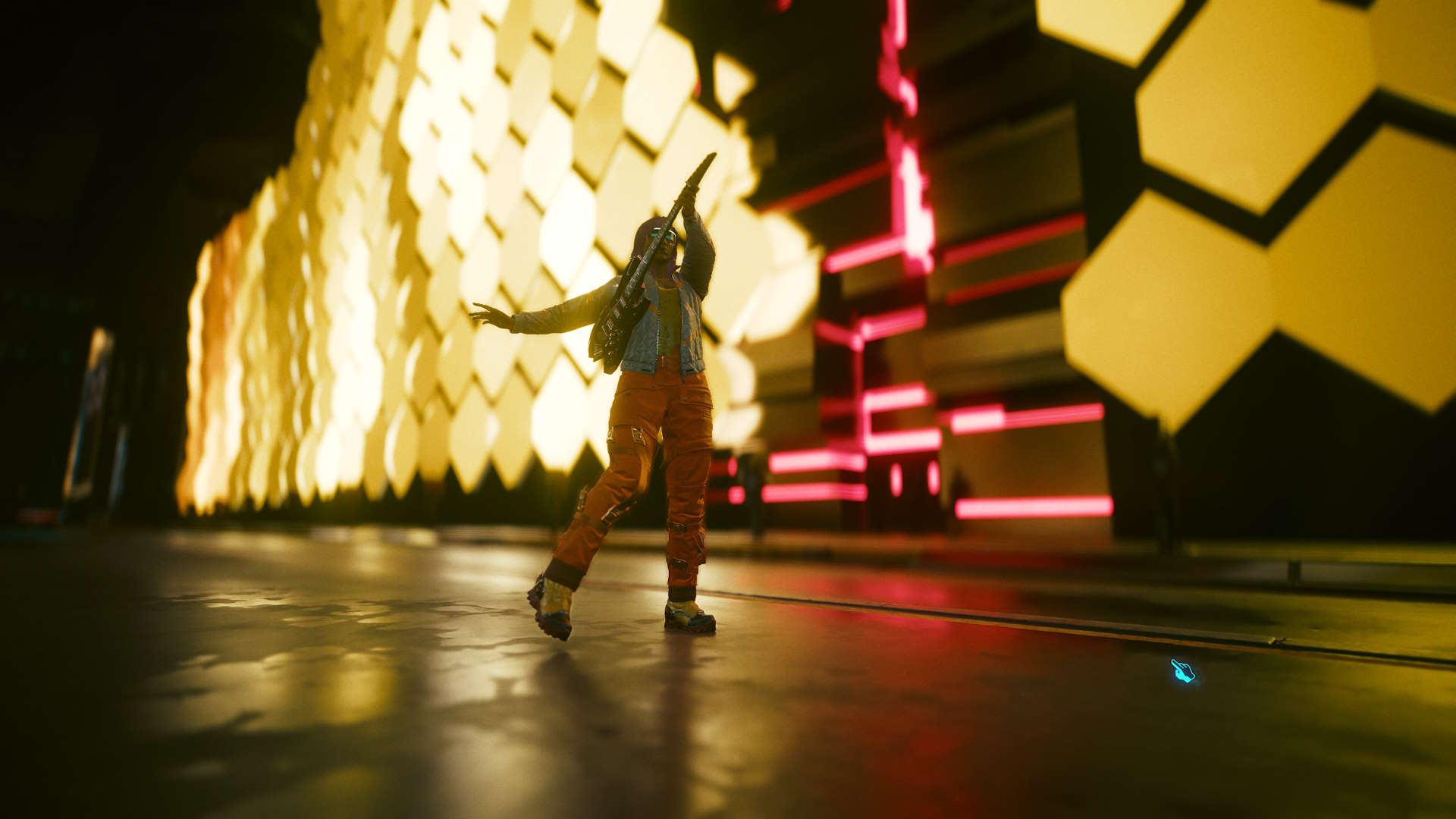You can already hack Ray Reconstruction into Cyberpunk 2077 without the path tracing limitation, but Nvidia promises to open it up officially soon
Ray Reconstruction makes Cyberpunk 2077 look absolutely stunning, but it can only be enabled with path tracing, or via some hacks.

Ray Reconstruction is the latest shiny ray tracing feature Nvidia, it's come along as part of DLSS 3.5 and it's made the Cyperpunk 2077 2.0 update look absolutely gorgeous. On Nvidia graphics cards only, of course. And only for Nvidia graphics cards that are capable of delivering a decent frame rate in the incredibly demanding path-traced RT Overdrive mode.
Ray Reconstruction is only available as a toggle in the Cyberpunk 2077 settings if you have the tech demo mode enabled already, which kinda flies in the face of all the noises out of Nvidia about how it won't be like Frame Generation and will be available to all RTX cards.
On the surface that might look like a bit of a bait and switch. You can enable it on your RTX 2060, but it needs to be able to deal with high-end ray tracing first, and oops, your old GPU can't do it. Sucks to be you.
But that's only for now. Nvidia even originally commented when it announced DLSS 3.5 that it was working with CD Projekt Red to enable it on other ray tracing modes. "For CP 2077, we focused on making RT Overdrive look great," I was told recently, parroting an earlier forum post, "and we're working with CD Projekt Red to add support for Ray Reconstruction for other RT modes. Stay tuned."
The explanation given to me by an Nvidia representative is that Ray Reconstruction "is most advantageous to games that use ray tracing heavily and path-traced titles definitely fall into that category.
"Ray Reconstruction for light-use RT features will have less image quality benefits due to less ray-samples and denoising occurring on the screen. So, while our current focus is on intensive ray-traced titles, we do plan to expand to light-use ray-traced titles in the future."
So, eventually your RTX 2060, with its limited capacity for ray tracing, will still get its chance to see what all the Ray Reconstruction fuss is about, in both Cyberpunk 2077 and other ray-traced games. Though we don't yet know what those other games might be. But you can bet we'll see something getting jammed into that Half-Life 2 RTX remake.
The biggest gaming news, reviews and hardware deals
Keep up to date with the most important stories and the best deals, as picked by the PC Gamer team.

You can, if you wish, enable Ray Reconstruction on standard ray tracing modes within Cyberpunk 2077 if you're happy to mess around with the config files yourself. You just need to go into your user folder in Windows and access the Cyberpunk 2077 UserSettings file, alter the DLSS_D setting to read "True" and set it to Read-only to avoid it getting overwritten by the game.

Best CPU for gaming: The top chips from Intel and AMD.
Best gaming motherboard: The right boards.
Best graphics card: Your perfect pixel-pusher awaits.
Best SSD for gaming: Get into the game ahead of the rest.
And it works. You just might have issues with corrupting settings data and the occasional error message.
I've had an RTX 4070 running with Frame Generation on and RT Ultra settings with Ray Reconstruction enabled and mostly looking great. There are some obvious artifacts where reflections don't pop in properly, or see-through meshes (such as fences) look kinda funky, and I haven't been seeing that on the path-traced version.
So, it seems there is a little work Nvidia needs to do to ensure that Ray Reconstruction works well on the lighter-use ray tracing modes. Whether that's a little more AI training, or whatever, the feature still works surprisingly well without that. Which makes me hope it's not going to be too long before it does get enabled officially.

Dave has been gaming since the days of Zaxxon and Lady Bug on the Colecovision, and code books for the Commodore Vic 20 (Death Race 2000!). He built his first gaming PC at the tender age of 16, and finally finished bug-fixing the Cyrix-based system around a year later. When he dropped it out of the window. He first started writing for Official PlayStation Magazine and Xbox World many decades ago, then moved onto PC Format full-time, then PC Gamer, TechRadar, and T3 among others. Now he's back, writing about the nightmarish graphics card market, CPUs with more cores than sense, gaming laptops hotter than the sun, and SSDs more capacious than a Cybertruck.

